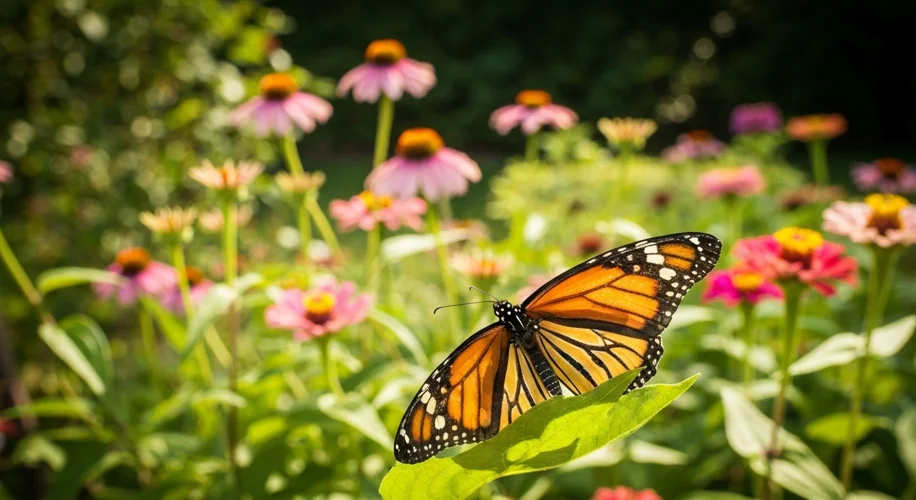It started with a flutter of distress. A monarch butterfly, its wing torn and delicate, lay on the patio. Seeing it struggle, I felt that familiar tug – the desire to help a creature in need. This little encounter, much like my gardening journey, is a reminder of how interconnected everything in nature truly is.
As a gardener, I’m always thinking about how to create a welcoming environment for all sorts of life. It’s not just about growing tomatoes or enjoying the shade of an apple tree; it’s about fostering a healthy ecosystem right in my own backyard. When I found that injured butterfly, it was a small, tangible example of what I try to cultivate on a larger scale.
Butterflies, like many garden visitors, rely on specific plants for food and shelter. For monarchs, milkweed is essential for their larvae. Flowers like zinnias, coneflowers, and asters provide nectar for the adults. My garden is a deliberate mix of native plants and nectar-rich flowers, aiming to be a haven for these beautiful pollinators.
When one of them is struggling, it highlights how important each element is. A single damaged wing means that butterfly can’t fly, can’t feed, and can’t complete its life cycle. It made me think about my garden in the same way. A patch of soil without the right nutrients, a lack of diverse plant life, or an imbalance in the ecosystem can similarly hinder the flourishing of the plants and creatures I’m trying to support.
I carefully brought the butterfly inside and placed it in a small container with some damp paper towel and a shallow dish of sugar water. It’s a temporary fix, of course, but a gesture of care. In the garden, these gestures translate to consistent practices: watering when needed, providing support for plants, and gently managing pests without harsh chemicals that could harm beneficial insects.
The goal in my garden is to create a resilient, self-sustaining environment. It’s about understanding that a healthy garden isn’t just a collection of pretty plants, but a community of living things working together. The birds help with pest control, the bees pollinate, and even the earthworms are busy improving the soil.
This injured monarch, resting and slowly recovering, became a symbol of that delicate balance. It’s a reminder that every little effort – whether it’s providing a safe space for a tiny creature or planting a new pollinator-friendly flower – contributes to the health and vibrancy of our natural world. It’s a beautiful, ongoing process, and I’m always learning from the small wonders that grace my garden.
What small acts of nurturing have you seen or participated in, either in your garden or elsewhere?

